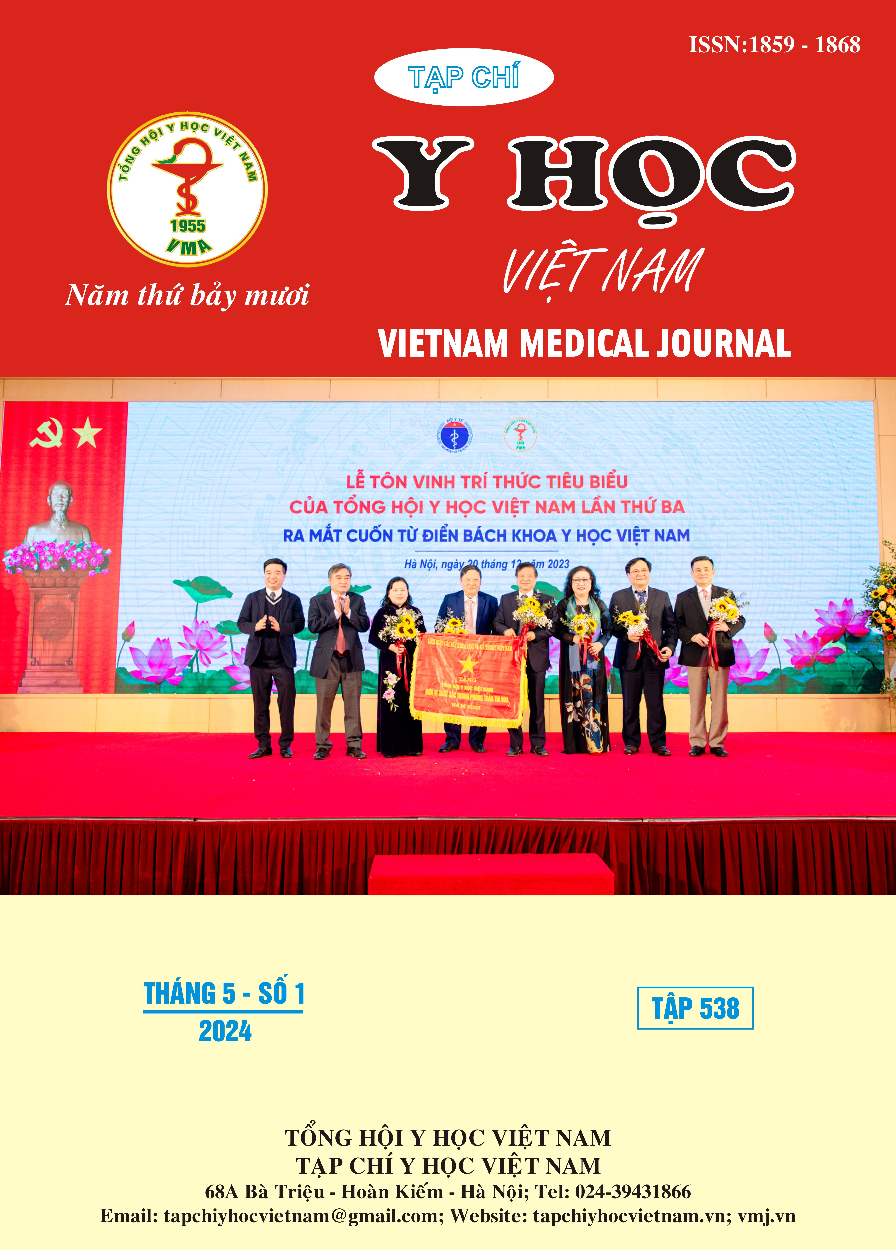RESISTANCE PROFILE OF COMMON BACTERIA ISOLATED FROM BLOOD CULTURES AT E HOSPITAL IN 2022
Main Article Content
Abstract
Septicaemia poses a significant public health challenge due to its severe and often fatal nature. The emergence of antibiotic-resistant bacterial strains compounds the complexity of treatment, resulting in increased healthcare costs. Methods: This cross-sectional study, conducted at E Hospital, aimed to characterize prevalent bacterial strains and assess their antibiotic resistance patterns in blood cultures. Results: The findings revealed a 22.3% positivity rate in blood cultures. The predominant pathogens identified were Escherichia coli (27.1%), Klebsiella pneumoniae (16.1%), Staphylococcus aureus (12.6%), and Acinetobacter baumannii (7.7%). Notably, the extended-spectrum beta-lactamase production rates were 63.4% for E. coli and 12.4% for K. pneumoniae. E. coli demonstrated the lowest resistance to amikacin (1.2%), carbapenem (3.7%), and piperacillin–tazobactam (6.2%), while exhibiting resistance ranging from 13.4% to 69.5% to other antibiotics, while K. pneumoniae exhibited the highest resistance to ampicillin (100%), ampicillin/sulbactam (100%), and piperacillin (91.2%), with the lowest resistance observed for amikacin (9.7%). A. baumannii and Pseudomonas aeruginosa displayed antibiotic resistance rates ranging from 22.7% to 60.9% and 18.2% to 45.5%, respectively. Methicillin-resistant Staphylococcus aureus was identified in 71.1% of cases, with the highest resistance observed against benzylpenicillin (97.4%) and erythromycin (71.1%). Notably, no vancomycin- or linezolid-resistant S. aureus strains were reported. Conclusion: E. coli, K. pneumoniae, A. baumannii, P. aeruginosa, and S. aureus emerged as the primary causative agents of sepsis, showcasing varying degrees of resistance to the antibiotics investigated.
Article Details
Keywords
Sepsis, antibiotic resistance, ESBL; MRSA; E Hospital
References
2. Diekema DJ, Hsueh PR, Mendes RE, et al. The Microbiology of Bloodstream Infection: 20-Year Trends from the SENTRY Antimicrobial Surveillance Program. Antimicrob Agents Chemother. 2019;63(7): e00355-19. doi:10.1128/ AAC.00355-19
3. Bộ Y tế, Hướng dẫn thực hành kỹ thuật xét nghiệm vi sinh lâm sàng. 2017, Nhà xuất bản y học.
4. Nguyễn Thị Hải. Tình hình kháng kháng sinh của một số chủng vi khuẩn gây nhiễm khuẩn huyết phân lập được tại bệnh viện đa khoa tỉnh Bắc Ninh năm 2021. VMJ. 2023;526(1A). doi:10.51298/vmj.v526i1A.5308
5. Hoàng Quỳnh Hương. Nghiên cứu tình trạng kháng kháng sinh của một số chủng vi khuẩn enterobacteriaceae gây nhiễm khuẩn huyết phân lập được tại bệnh viện đa khoa tỉnh thái bình năm 2018 - 2019. Accessed May 27, 2023. https://tapchiyhocvietnam.vn/index.php/vmj/article/view/169/74
6. Van An N, Hoang LH, Le HHL, et al. Distribution and Antibiotic Resistance Characteristics of Bacteria Isolated from Blood Culture in a Teaching Hospital in Vietnam During 2014-2021. Infect Drug Resist. 2023;16:1677-1692. doi:10.2147/IDR.S402278
7. Lương Thị Hồng Nhung. Đặc điểm kháng kháng sinh của một số vi khuẩn gram âm sinh enzyme beta lactamase phổ rộng phân lập tại bệnh viện trung ương Thái Nguyên năm 2018-2020. VMJ. 2022; 512(2). doi:10.51298/vmj. v512i2.2313
8. Liu Cailin, Xu Min, Li Xiaogai, Dong Huiyue, Ming Liang. Trends in antimicrobial resistance in bloodstream infections at a large tertiary-care hospital in China: a 10-year retrospective study (2010–2019). Journal of Global Antimicrobial Resistance. 2022;29:413-419. doi:10.1016/j.jgar. 2021.09.018


